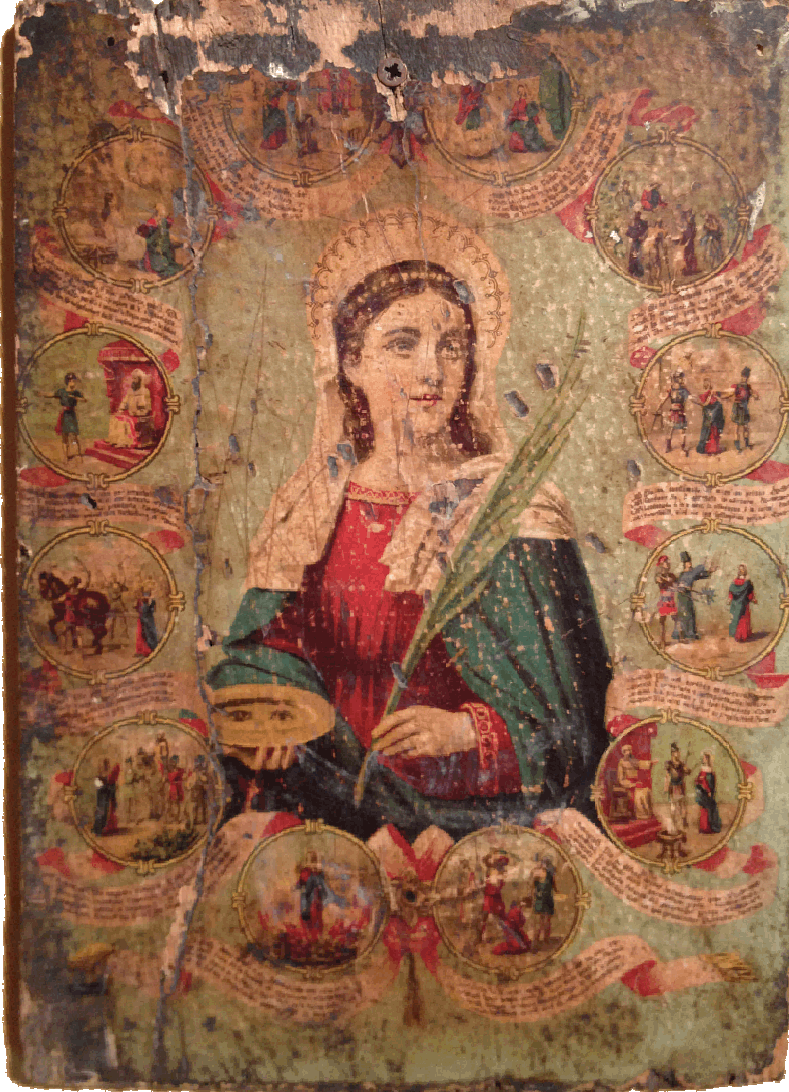
The Passion of St. Lucy
Mid-19th century
Oleograph
Palazzo Bellomo, Syracuse, Sicily
The details of this image may be best examined on the full resolution page. The saint stands in the middle with a martyr's palm branch and a plate with her primary attribute, a pair of eyes. The roundels surrounding her are to be read in pairs, first the left then the right, from top to bottom. They follow the story as related in the Golden Legend, with a few differences. Although the oleograph is on display in a Sicilian museum, the inscriptions that accompany the roundels are in French.
In the top two roundels Lucy and her mother attend Mass and hear the gospel story of the woman with the bloody flux (left). This being the mother's ailment, the two pray on their knees to St. Agatha (right).
In the next pair of roundels the mother is cured (left) and in thanks Lucy sells her patrimony and gives the proceeds to the poor (right).
Next pair: Lucy's fiancé, angry that she has given away her wealth and spurned him for "one which had a more fairer and nobler heritage," reports her to the judge Paschasius (left), who has her arrested (right).
In the next pair the left roundel shows Lucy being pulled by a horse (left); this seems to be substitute for the usual detail in which it is a team of oxen that tries unsuccessfully to pull her to a brothel so that the "ribalds" can "labour her so much till she be dead." When the horse/ox team fails, Paschasius has his "enchanters" give it a try (right), again without success.
Next, on the left Lucy upbraids Paschasius. In the Legend this happens before the judge orders all these attempts on her life. On the right he orders her burned to death; a cauldron of fire in the foreground expresses what he is commanding from his throne.
Finally, at the bottom, in the left roundel Lucy stands unharmed among the flames and in the right roundel a soldier kills her with a sword. The latter looks like a decapitation, but in the Legend she merely has her throat cut.
Read more about St. Lucy.
Photographed at the Palazzo Bellomo by Richard Stracke, shared under Attribution-NonCommercial-ShareAlike license.